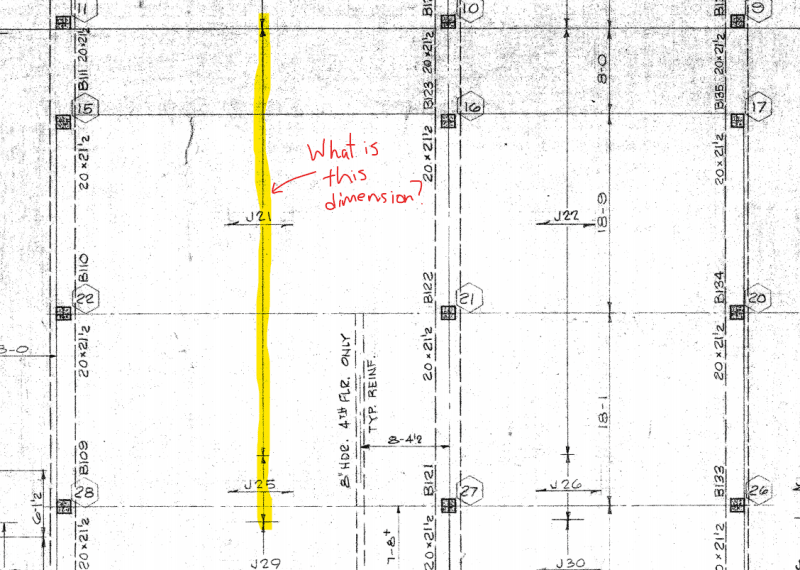lexpatrie and jayrod12, thank you so much. Great insight! It's good to hear from engineers about what should be done. I could be missing something, but the first dimension was not called out anywhere. I learned that what I've meant to say earlier, is asking about the edge rib. I was mistaken in thinking that the edge span and the interior span were the correct terms. The edge span is the joist system that borders no joist system on one side and potentially a joist system on the other (e.g. a joist system next to an exterior wall). An interior span is a system of joists that is bordered by a joist system on either side. I have a copy of the 1980 CRSI design handbook, and I couldn't find anything in the concrete joist construction chapter except lots of tables for designing spans (end and interior). There might be something else in the handbook that would help me, but I cannot find it.
I'm assuming that maybe for this age of construction, the contractor worked out exact plans of where the joists would go and confirm that the rib and header locations (which are not dimensioned exactly by the engineer) would satisfy the engineer of record. I still don't understand why there were the same joists in parallel, there's no note to 'start joist layout here,' it's just the same layout through in parallel. In the field I have confirmed that there are occasionally double joists and the such, but they don't match too well with the drawings.


